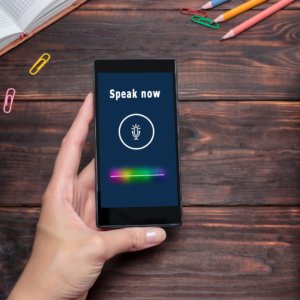

Voice Assistant Technology had a market of its own even before the pandemic hit. Covid-19 and the fear that comes with it have just acted as a catalyst in the adaptation process and radically reshaped consumers’ choices. If we go back to 2019, we see that home and voice-connected devices were moving towards becoming consumers’ commerce command focus. The trend revolves around millennials who own six devices run on voice assistants except for their phones, and over 31% seem to have made purchases using these devices.
With these numbers, we can deduce that the world was already moving towards a more Voice technology and AI-led market before ‘Global Pandemic’ shook our lives. Since the pandemic hit, consumers’ lives have been radically digitalized across all forums, including entertainment, shopping, work, health consultation, and F&B. it is highly likely that most businesses will stick to a more Voice tech-driven service even after things go back to normal. It has also increased the ease of doing business and eradicated the need to micromanage at many fronts.
When we look at the intersection between consumers who had already started interacting with voice assistants before the pandemic struck and those who plan to stick with a fundamentally digital lifestyle post the pandemic, we start seeing the significant opportunities for a voice technology-led commerce ecosystem. It’s an enhancement that is already visible across global consumer data and in the evolving upturns and cases of extended use for voice-enabled commerce technology.
Frequent Chatting with AI
Consumers staying back at home with considerably reduced avenues for conversations with their peers or friends have begun talking to their smart speakers often than usual.


“The number of people who are using voice commands at least once a day rose from 46 percent to 52 percent during the pandemic’s early weeks. ~ According to a report by NPR and Edison Research.”
“A majority of people who were surveyed, approximately 77 percent have said their emblematic routine had changed because of the Pandemic, and almost half of them said that they have been working from home. The report also suggests that the smart speaker ownership has ascended to 4 percent during the era of physical distancing, and that smart speakers with screens embedded (like Alexa Show and Google Nest Hub) have promptly gained popularity.” This is According to The NPR/Edison Smart Audio Report where 1,660 adults were interviewed between March 31 and April 1.
Is Voice AI our new Retail clerk?
According to Jan Kniffen, ‘Voice AI has offered retailers a distinctive solution to the problems pertaining to COVID-19-era. Customers are too worried about having to stand close to each other or interact with staff in physical stores. Voice assistants have presented a path that offers unique physical retail experiences that seem to have been personalized according to the shoppers’ without violating any physical distancing guidelines or encroaching on the consumers’ comfort.’
Amealio’s correctly oriented AI can help consumers find out where they can order food from or where they can dine. It also comes with inbuilt payment options and has made exploring restaurants from the ease of your computer or mobile screens and using voice tech instead of having to search everything manually easier.
Kniffen predicted that “We’re going to see more of what’s happening now, just done better.”
And of late, there is evidence supporting the “done better” mentality and spreading across the voice ecosystem. This is majorly due to various platforms expanding their capabilities. Amazon, for example, has updated Alexa and tried to make its speech sound natural while reading the news. That more realistic voice can help consumers’ get a more personalized feel and help to boost their comfort levels; talking with Alexa has become a frequent occurrence.
Amalgamated with the great digitization tsunami, Amealio is currently trying to break out across the F&B ecosystem. The question is, ‘Will voice-assisted transactions become the preferred method for truly contactless commerce?’ Maybe a familiar voice or touchless payment system is all consumers need to feel comfortable while shopping at stores again.
USA: One Sansome St Suite 3500, San Francisco, CA 94104
Canada: 4979 Willingdon Ave, Burnby, VG5 3H8
India: Amanora Chambers, Amanora Park Town, Pune 411028
India: T-Hub, IIIT Campus Hyderabad, Telangana 500032